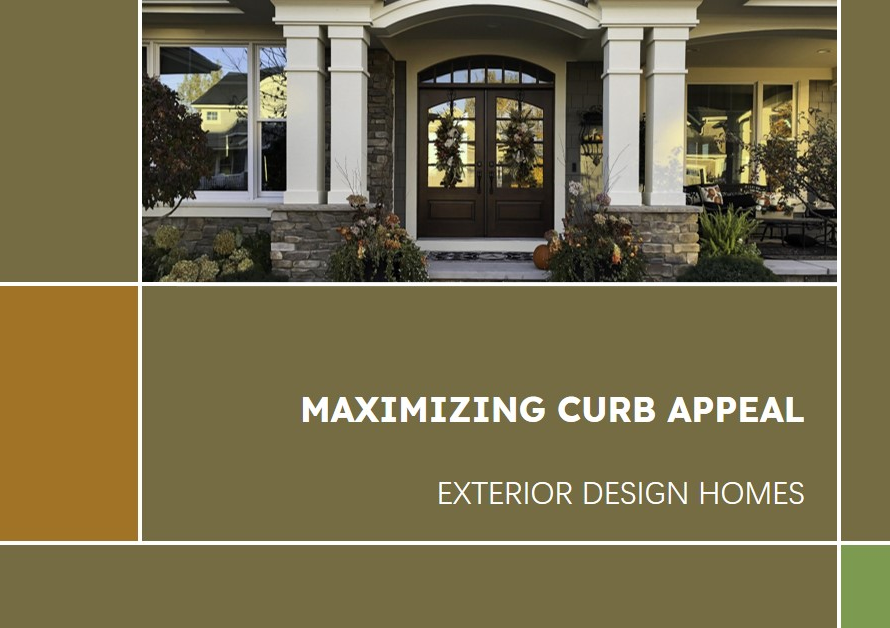
Table of Contents
- Introduction:
- The Foundation of Exterior Design:
- Understanding the Site and Surroundings:
- Material Selection: The Palette of Design:
- Embracing Sustainable Design:
- The Role of Color in Exterior Design:
- Integrating Architectural Styles:
- Enhancing Curb Appeal:
- The Impact of Lighting:
- Future Trends in Exterior Design:
- Conclusion: The Art of Crafting Beauty
Introduction:
Exterior design in architecture is a dynamic fusion of aesthetics, functionality, and sustainability. It shapes the first impression of any structure and contributes significantly to its identity and value. This blog post delves into the intricate process of crafting beauty through exterior design, offering insights into its many facets and showcasing its importance in modern architecture.
The Foundation of Exterior Design:
Exterior design is more than mere decoration; it is the architectural discipline that blends form and function to create visually appealing, practical, and sustainable structures. Architects must consider various elements, including the building’s purpose, its environment, and the cultural context.
By starting with a strong foundation, designers ensure the building is not only beautiful but also functional and harmonious with its surroundings. This holistic approach results in structures that stand the test of time, both aesthetically and practically.
Understanding the Site and Surroundings:
A successful exterior design begins with a thorough understanding of the site and its surroundings. Architects must analyze the landscape, climate, and local culture to create a design that enhances and complements its environment.
Consideration of the natural topography, existing vegetation, and weather patterns can influence material choice, orientation, and overall design. By integrating these elements, architects create buildings that are not only beautiful but also environmentally responsible and energy-efficient.
Material Selection: The Palette of Design:
The choice of materials is crucial in exterior design, impacting the building’s aesthetics, durability, and environmental footprint. Modern architects have a vast array of materials to choose from, including traditional options like brick and stone, as well as contemporary choices such as glass, steel, and sustainable composites.
Each material offers unique properties and visual effects. For example, stone provides a timeless, sturdy appearance, while glass can create a sleek, modern look and allow for natural light to flood interior spaces. By thoughtfully selecting materials, architects can achieve the desired aesthetic and performance for the building.
Embracing Sustainable Design:
Sustainability in exterior design is no longer optional; it is a necessity. Incorporating sustainable practices reduces the environmental impact of buildings and enhances their long-term viability. This includes the use of eco-friendly materials, energy-efficient systems, and designs that minimize waste and maximize resource efficiency.
Green roofs, solar panels, and rainwater harvesting systems are examples of sustainable features that can be integrated into exterior designs. These elements not only reduce the building’s ecological footprint but also offer economic benefits through energy savings and potential tax incentives.
The Role of Color in Exterior Design:
Color is a powerful tool in exterior design, capable of transforming a building’s appearance and mood. The right color palette can enhance architectural features, create harmony with the surroundings, and evoke specific emotions.
Choosing colors involves more than personal preference; it requires an understanding of color theory and its psychological impacts. For instance, warm colors like red and orange can create a sense of warmth and energy, while cool colors like blue and green can evoke calmness and tranquility. A well-chosen color scheme can significantly contribute to the building’s overall aesthetic appeal.
Integrating Architectural Styles:
Architectural styles serve as a blueprint for exterior design, offering a framework of established principles and aesthetic guidelines. From classical to contemporary, each style brings its own set of characteristics and visual language.
Integrating architectural styles requires a deep understanding of historical contexts and the ability to adapt traditional elements to modern needs. This blend of old and new creates unique, timeless designs that respect tradition while embracing innovation. For example, a modern interpretation of a Victorian façade can maintain historical charm while incorporating contemporary materials and technologies.


Enhancing Curb Appeal:
Curb appeal is a critical aspect of exterior design, especially for residential properties. It is the visual attractiveness of a building as seen from the street, and it significantly impacts property value and first impressions.
Elements such as landscaping, lighting, and entryways play vital roles in enhancing curb appeal. Thoughtful design choices, like well-manicured gardens, strategically placed lighting, and inviting front doors, can create a welcoming and attractive exterior that stands out in any neighborhood.
The Impact of Lighting:
Lighting is an often overlooked but essential component of exterior design. It enhances the building’s appearance, highlights architectural features, and improves safety and security.
Effective lighting design involves balancing functional needs with aesthetic considerations. For example, ambient lighting can create a warm, inviting atmosphere, while accent lighting can draw attention to specific architectural details. Additionally, energy-efficient LED lighting and smart control systems can provide both sustainability and convenience.
Future Trends in Exterior Design:
The future of exterior design is shaped by technological advancements, environmental considerations, and evolving aesthetic preferences. Emerging trends include the use of smart materials, integration of artificial intelligence, and increased emphasis on resilience and adaptability.
Smart materials, such as self-healing concrete and responsive glass, offer innovative solutions for durability and energy efficiency. Artificial intelligence can assist in optimizing designs for performance and sustainability. Furthermore, architects are increasingly focusing on creating buildings that can adapt to changing environmental conditions, ensuring longevity and relevance in a rapidly evolving world.
Conclusion: The Art of Crafting Beauty
Crafting beauty in exterior design is a multifaceted endeavor that requires creativity, technical expertise, and a deep understanding of the built and natural environments. By thoughtfully considering elements such as site context, material selection, sustainability, color, and lighting, architects can create stunning exteriors that are both functional and aesthetically pleasing.
As we look to the future, the integration of advanced technologies and sustainable practices will continue to shape the evolution of exterior design, ensuring that our built environment remains beautiful, resilient, and harmonious with the natural world.


